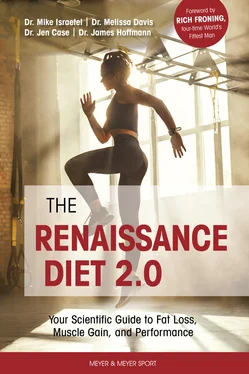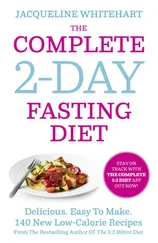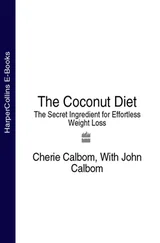1 ...7 8 9 11 12 13 ...22 Protein is unlikely to offer any special benefits (to added muscle mass) beyond optimal consumption, but because carbohydrates lead to insulin secretion and because insulin is highly anabolic over time and when paired with resistance training, eating as much carbohydrate as possible within constraints is practical for muscle gain. Carbohydrates are so valuable for muscle gain that the recommendation for maximum protein on a hypercaloric diet should likely be capped at around 1.5 g of protein per pound of bodyweight per day so that a greater caloric value of carbs can be programmed.
Data have consistently shown that consumption above about 0.9 g of protein per pound of bodyweight per day does not enhance muscle gain. Since carbs do not have quite as low a cap for their anabolic effects, any extra protein consumed is going to risk pushing out carbs within the constraint of calories, and thus net anabolism could suffer. Our recommendation for optimal muscle growth is therefore around 1.0 g of protein per pound of bodyweight per day.
Carbohydrates are large molecules that come in several main categories:
•Monosaccharides
Single-molecule carbohydrates. These include glucose, fructose, and galactose.
•Disaccharides
Two-molecule combinations of monosaccharides used to form a single, large molecule. These include sucrose (a glucose and a fructose bonded), lactose (a glucose and a galactose bonded), and maltose (two glucoses bonded).
•Polysaccharides
Longer strings of monosaccharides chained together. These include starch (a digestible form of many glucoses linked together), cellulose (fiber which is mostly indigestible by humans and made up of glucose molecules), and glycogen (an irregular matrix of connected glucose molecules which is the most common form for carbohydrate stored in muscle tissue and the liver).
All the listed carbohydrates (aside from fiber) can be converted into glucose and used for the following, usually in this order of priority:
•Transported to cells and broken down for immediate energy use.
•Transported to the blood to circulate and provide glucose to needy cells, such as neuronal cells that do not store much fuel of their own and prefer glucose.
•Transported to the liver to be assembled as glycogen for storage. Liver glycogen can be broken down to release glucose into the blood when blood glucose levels fall too low.
•Transported to skeletal muscles to be assembled as glycogen for storage. When skeletal muscles are working at higher effort intensities (anything as hard as a jog or harder), they rely heavily on this stored glycogen to provide the energy to power contractions.
Energy-needy cells get first priority for incoming glucose. Not until most cells are energy-satiated will carb consumption result in increased blood glucose. Once blood glucose is at an appropriate level, liver glycogen synthesis becomes priority. Only when all the above carbohydrate needs are attended to will muscle glycogen start to be synthesized in any meaningful amount.
Originally, “simple” carbs were defined as monosaccharides and disaccharides and “complex” carbs were meant to denote polysaccharides. It was previously thought that simple carbs digested quickly, tasted sweet, were more addicting, and were worse for health whereas complex carbs were opposite in every respect. Unfortunately, this model for carbohydrates was fundamentally flawed. For example, fructose is a simple carbohydrate, but is incredibly slow digesting. In contrast, starch is a complex carbohydrate that, in its pure form, is digested and absorbed even faster than glucose. Furthermore, simple carbs are no more addicting than starches. When consumed appropriately, simple sugars are no worse for health than starches and can have some distinct timing-related benefits for training. There is no reason to assign “good” or “bad” monikers to different carb sources based on their molecular complexity alone.
As you may have already inferred, the primary role of carbs in the human diet is for use as an energy source. Proteins are mainly used as building blocks for tissue and only used for energy on occasion (when carbohydrates and fats are lacking). Carbohydrates are the raw materials for energy metabolism and are used only in limited forms as structural components. In other words, the body’s primary use for carbs is to power cells, and carbs are particularly important in powering the operation and contraction of muscle cells. As energy substrates, carbohydrates have no equal–they easily and rapidly provide energy, especially for high-volume users like nervous system cells and muscle cells.
Figure 3.4 Carbohydrate have the second largest impact on body composition and performance compared to the other macronutrients and thus must be prioritized after protein in a structured diet .
Minimum, Maximum, and Recommended Daily Carbohydrate Intake
Glucose can be obtained from other macronutrients, albeit less efficiently. The human body does not actually need any carbohydrates from the diet for basic survival and health. So the minimum carbohydrate intake could be set at zero. The most abundant sources of needed vitamins, minerals, phytochemicals, and fiber, however, are vegetables, fruits, and whole grains, all of which contain carbs. While most of these micronutrients can be supplemented, many are absorbed more efficiently when consumed via whole foods, so eliminating carbs entirely presents some risk to health.
How much plant-based food must be consumed to meet micronutrient needs for health depends on which foods are consumed. If a high diversity of colorful veggies and fruits are eaten regularly, the micronutrients they contain will satisfy health requirements with relatively low-carb intakes. On the other hand, if more processed grains are the primary source, a considerably higher amount of carb-rich food must be eaten to ensure adequate micronutrient intake.
The ceiling for carbohydrate intake is best set by using CCH to dictate carb amounts once protein and fat at are their respective minima. Within this constraint, there is no notable downside to very high carb consumption. These recommendations are fairly vague, so we will outline some specifics for carb intake here.
Carbohydrate Needs for Health
In our estimate, if the predominant carb sources in the diet are vegetables and fruit, a minimum of around 0.3 g of carbs per pound of bodyweight per day is sensible for vitamin and micronutrient intake needs. Though currently popular, ketogenic diets are not ideally healthy.
Many of the conclusions regarding the benefits of ketogenic diets have been determined in studies using obese subjects for whom any means of weight loss leads to improved health. Better studies are needed in healthy but sedentary individuals for a full assessment of the benefits and downsides to low-carb eating. For short periods of time (months), ketogenic diets might be safe, but they are not recommended for health in the long term (years). This is different for people who eat a ketogenic diet for medical reasons, a topic that is being widely researched.
Direct study of the subject and decades of research on individuals who eat vegan or otherwise highly plant-based diets have shown that relatively high carb consumption has no negative health effects on its own. Remember, though, that we are viewing all these statements through the lens of the CCH. If you are eating so many carbs that you begin to violate your calorie needs and gain excessive fat, negative health effects will almost certainly follow. On the other hand, if you displace too much fat and protein with carb calories, you will also likely suffer negative health effects. Within these CCH-based constraints, even the maximum amount of carbohydrate consumption in no way interferes with health. For example, many vegans regularly consume upwards of 80% of their calories from carbohydrates, and as a group, they tend to be just about as healthy as any group ever studied.
Читать дальше












